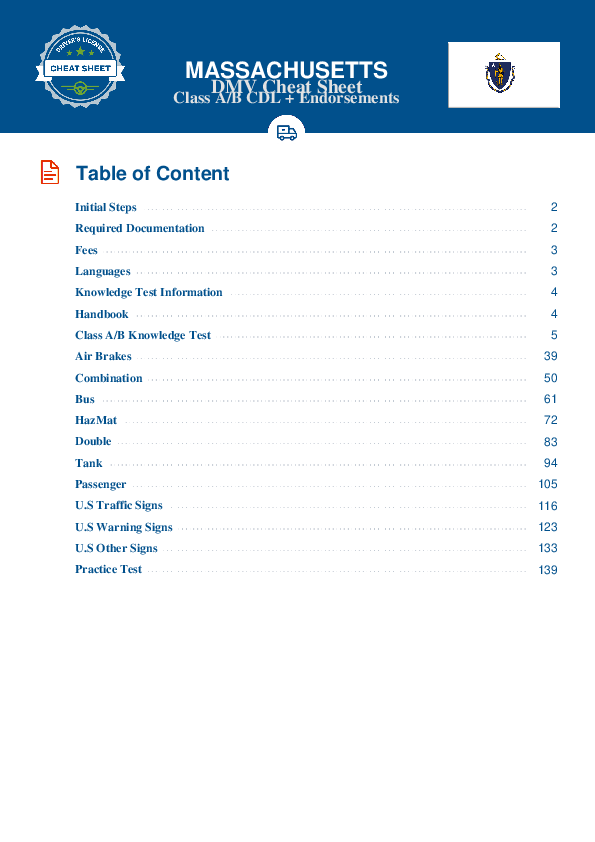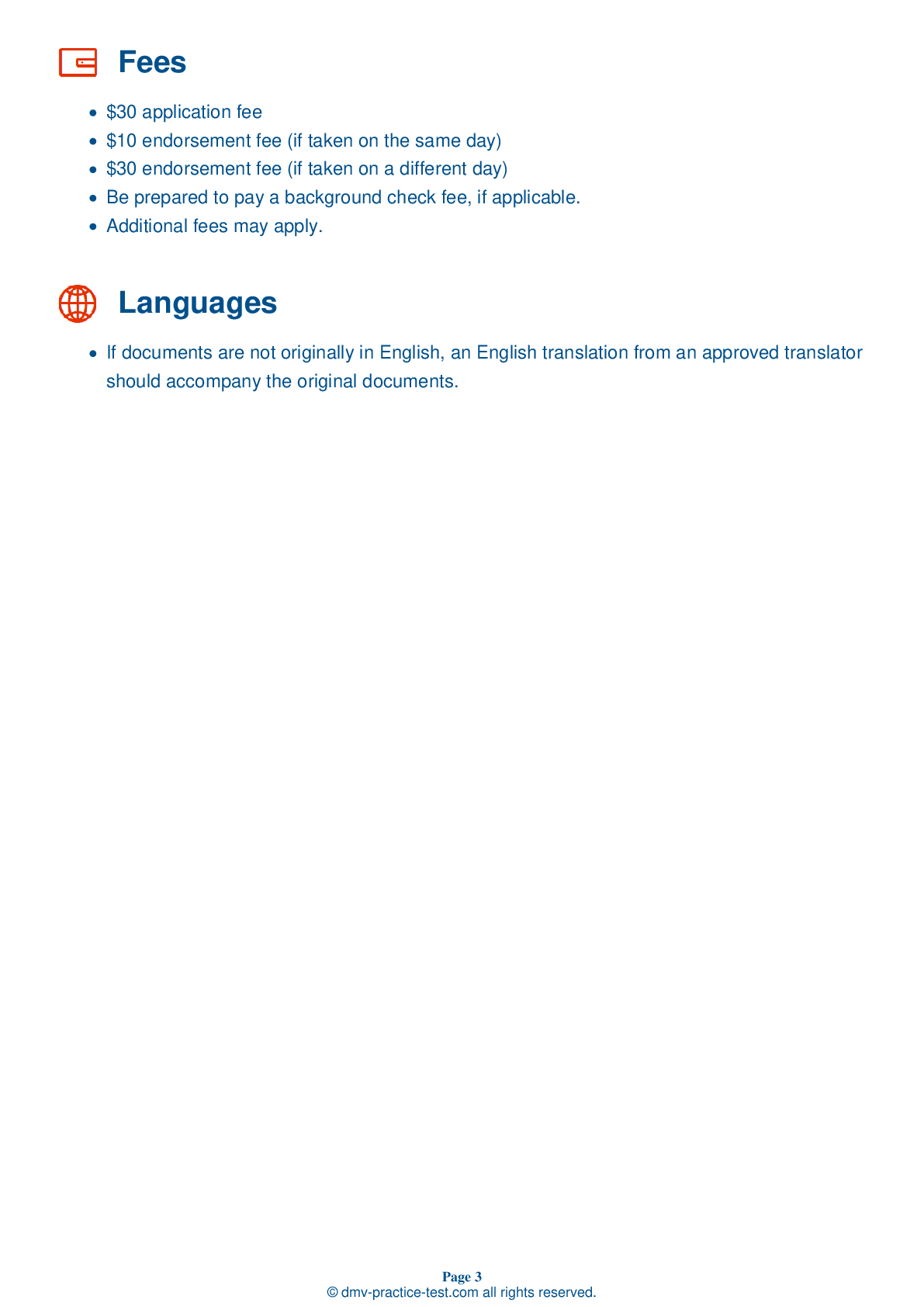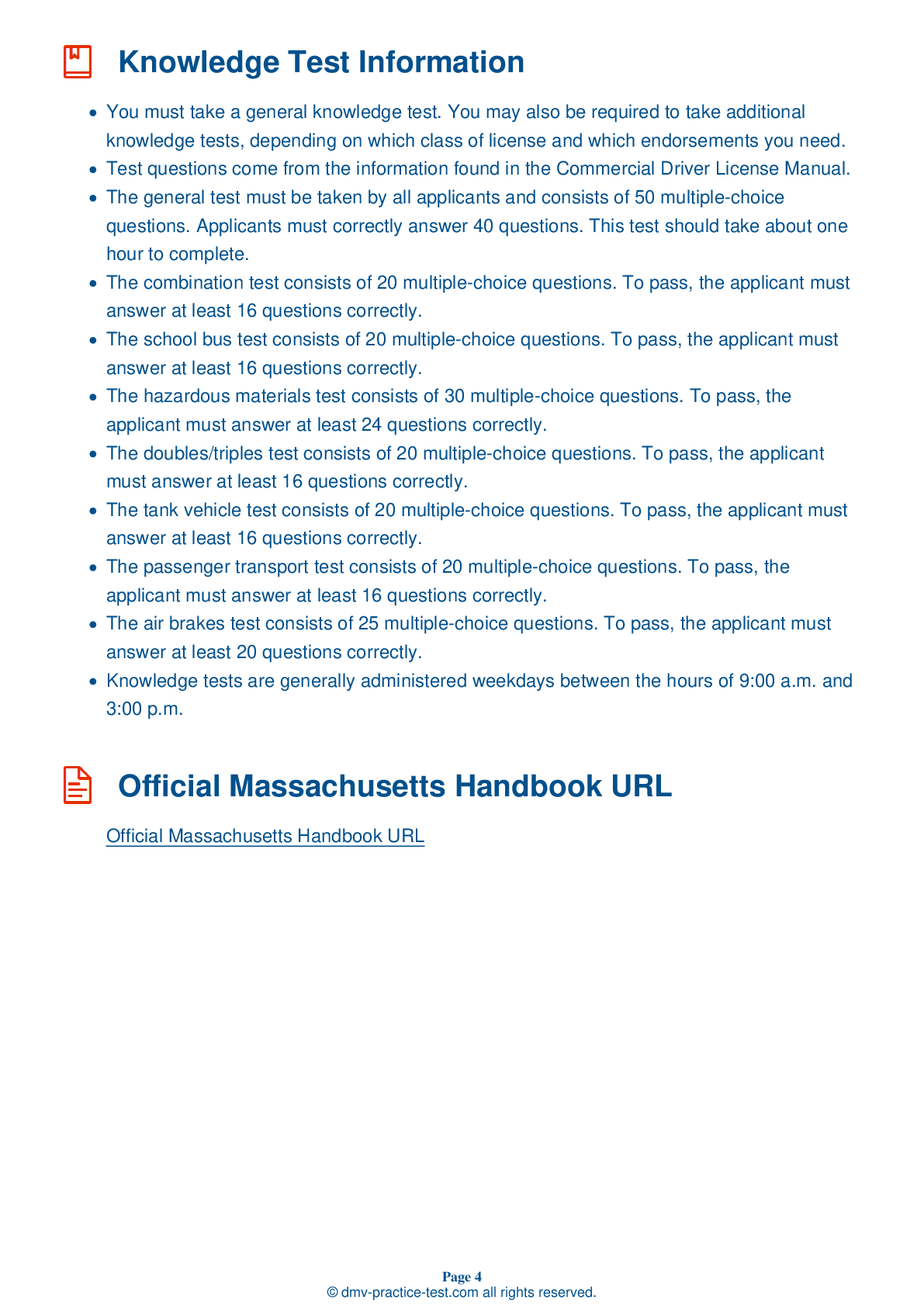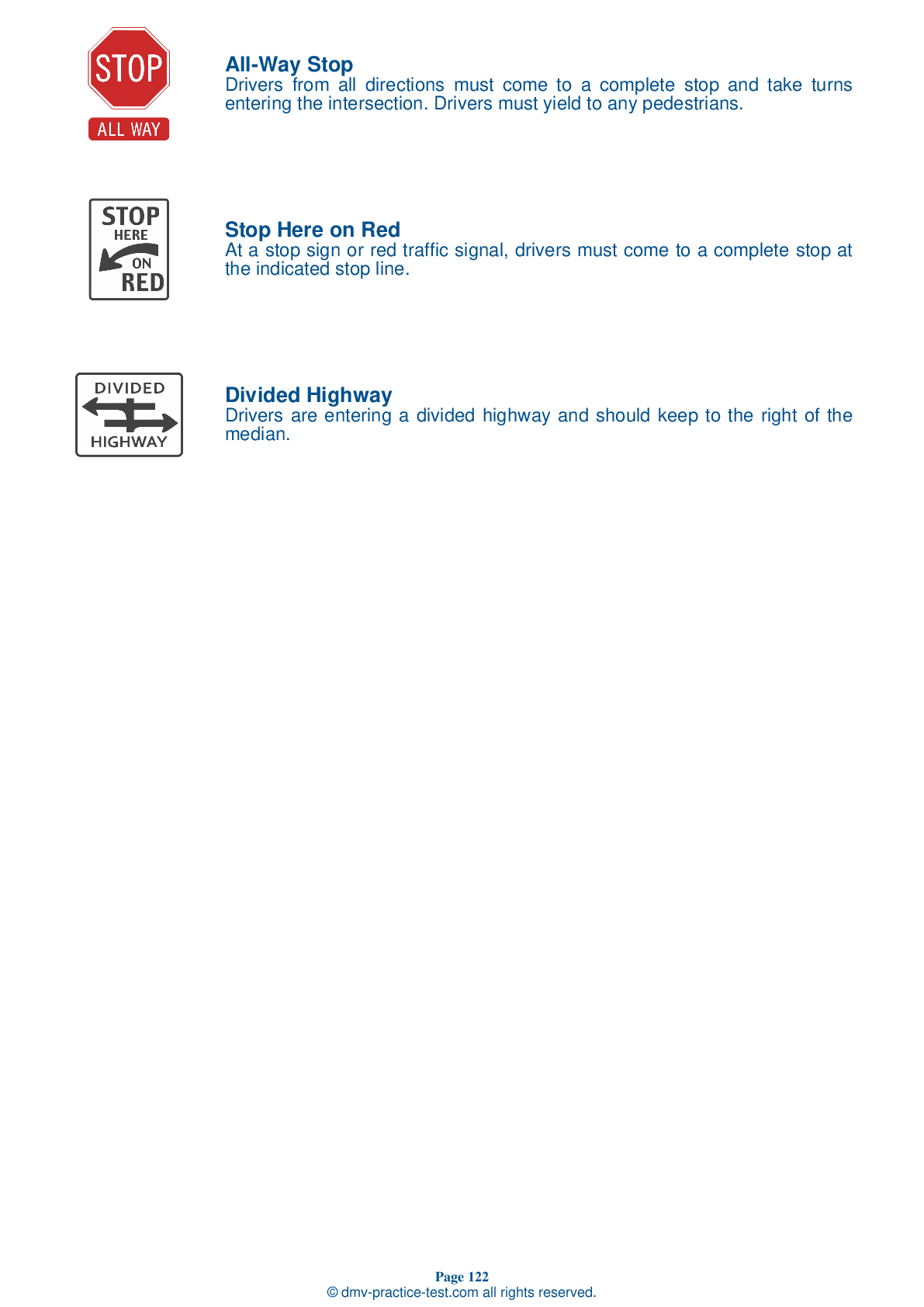Combination Vehicles Practice Test | Massachusetts 2026 #1 Page 2 of 3
Train for FREE online with our Massachusetts CDL combination vehicle test. The official exam test consists of several obligatory parts, with all of them checking your knowledge of different blocks of road rules. If you need to obtain a MA combination license in 2026, practice as much as possible. Free sample tests published on our website will help you check and improve your knowledge and boost your grades. Please bear in mind that DMV requirements for issuing a combination license may vary from state to state.
8 . If a trailer is too high:
Before coupling together a tractor and a trailer, you should make sure the trailer is at the proper height. If the trailer is too low, the trailer nose may be damaged. If the trailer is too high, it may not be able to couple correctly.
9 . In a combination rig, it is best to make:
When driving a combination vehicle, it is important to brake well in advance and look far ahead of your vehicle to avoid the need for sudden stops. Making habits of these actions will help you prevent your trailer from jackknifing.
10 . A shut-off valve:
Shut-off valves are used in air supply lines to control the passage of air from one trailer to another. The rear shut-off valve should always be closed to prevent air from leaving the braking system.
11 . One way to prevent a rollover is to:
A rollover is more likely if cargo is unevenly loaded in a rig. To help prevent a dangerous rollover, it is important to keep a load as centered on the rig as possible.
12 . ____ are the cause of more than half of all accident-related truck driver deaths.
More than half of all accident-related truck driver deaths are a result of truck rollovers. To help prevent a rollover, be sure to load cargo low to the ground and centered on your rig. Take corners slowly and carefully.
13 . Test the tractor protection valve by:
You should test the tractor protection valve by allowing the air supply to properly charge, turning off the engine, then releasing air from the system by pressing the brake pedal several times. The tractor protection valve should move into its emergency position when psi drops to an unsafe level.
14 . Failure to keep the fifth wheel plate properly greased could:
Failure to keep the fifth wheel plate properly lubricated can create friction between the tractor and trailer, causing steering problems.
See the exact questions that will be on the 2026 Massachusetts DMV exam.
99.2% of people who use the cheat sheet pass the FIRST TIME
Lillian MCcranie explains how our CDL study guide was helpful in passing the exam and recommends it to everyone.
Cameron tells us how he purchased the CDL exam, and found it to be a useful tool which helped him pass the exam and find a job.



